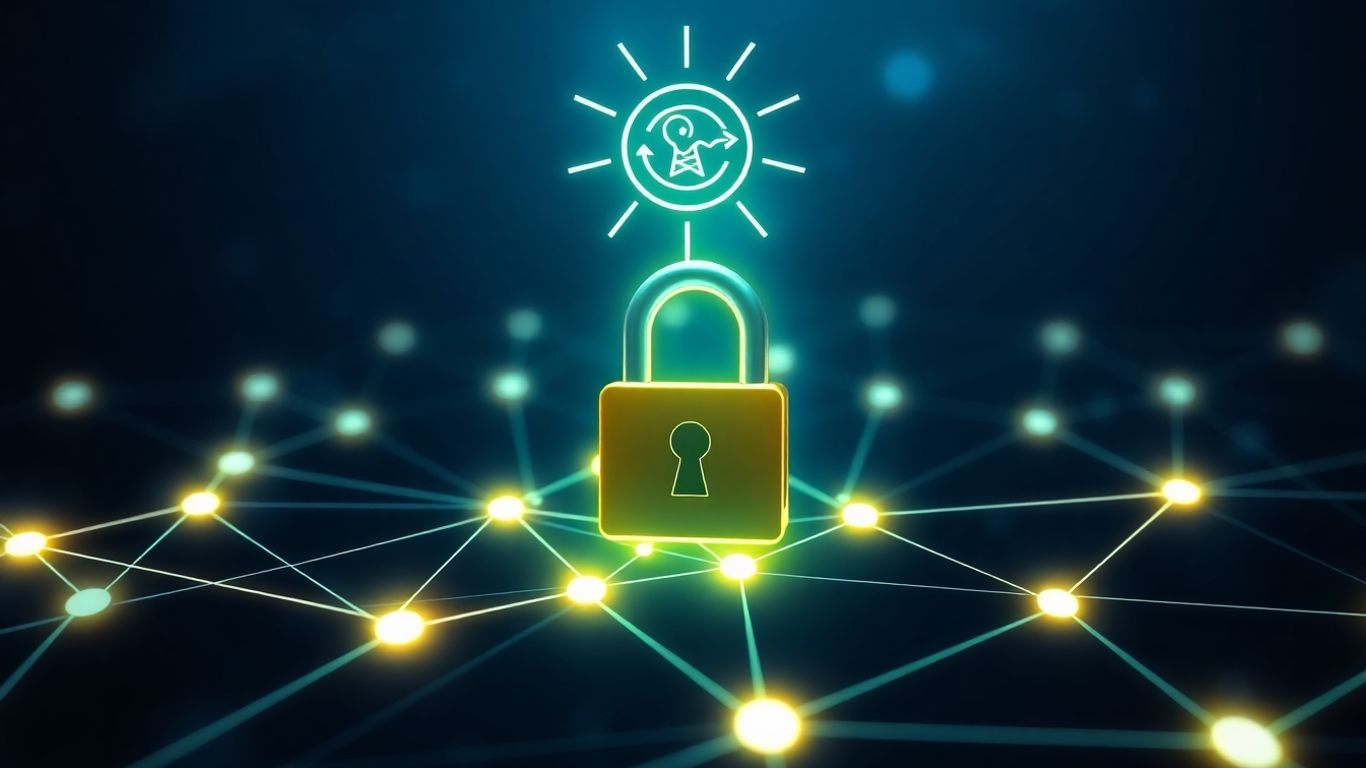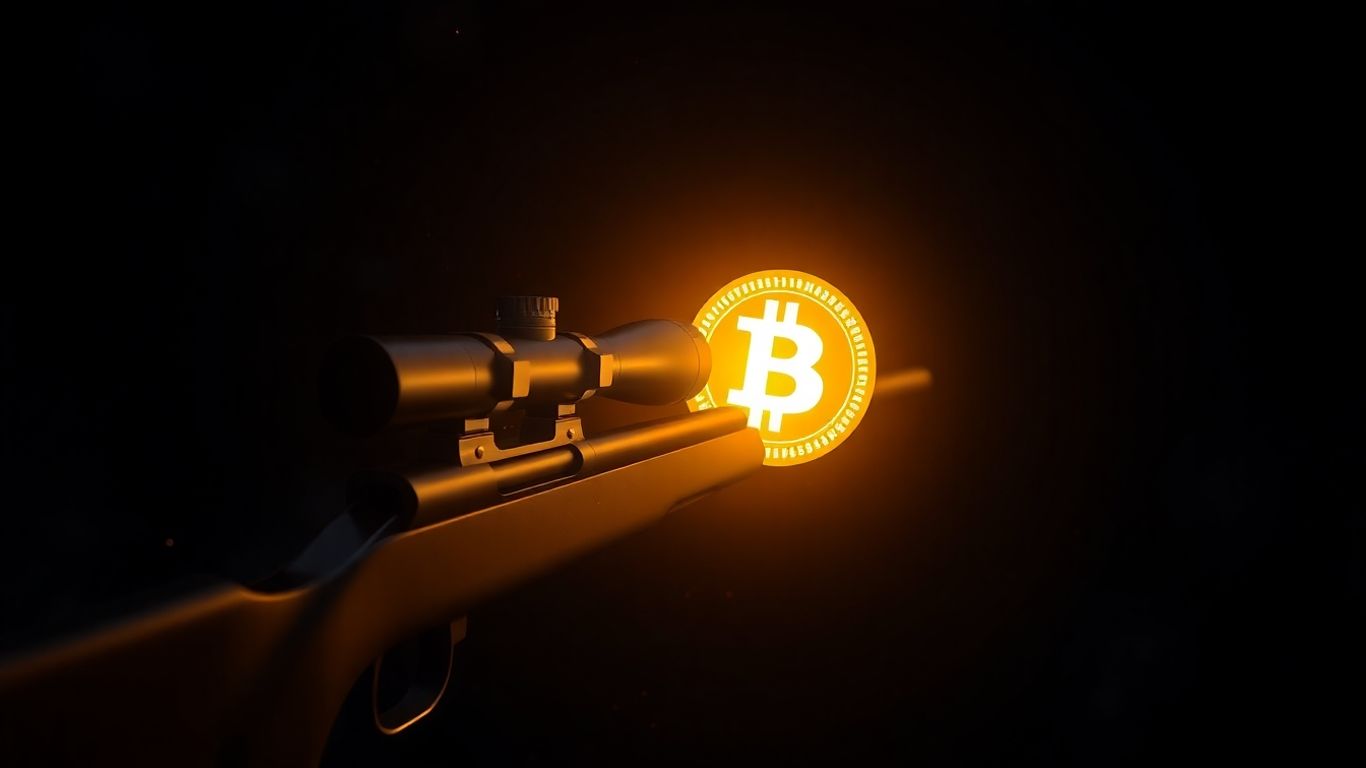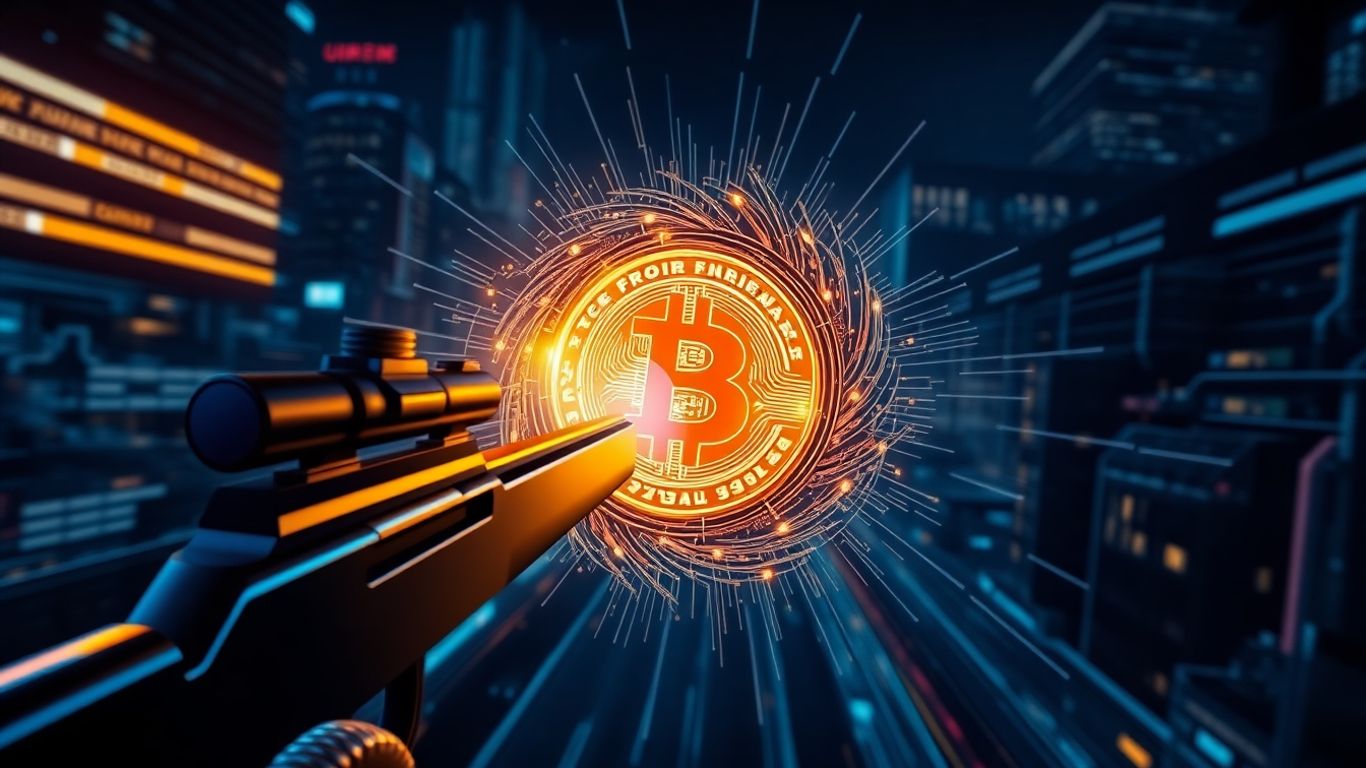[ newsletter ]
Stay ahead of Web3 threats—subscribe to our newsletter for the latest in blockchain security insights and updates.
Thank you! Your submission has been received!
Oops! Something went wrong. Please try again.
Protect your crypto investments with the ultimate rug pull scanner. Learn how to identify scams, interpret reports, and stay safe in DeFi.





Crypto is exciting, but let's be real, it can also be a minefield. One of the biggest headaches out there? Rug pulls. These scams happen when project creators just vanish with everyone's invested money, leaving tokens worthless. It's a huge problem, and honestly, it can cost people a lot. That's why knowing how to spot them is super important. We're going to look at how to protect yourself, and a rug pull scanner is a pretty big deal in all of this.
Alright, let's talk about one of the nastier sides of the crypto world: rug pulls. You might have heard the term thrown around, but what exactly is it? Simply put, a rug pull is a type of scam where the people behind a cryptocurrency project take all the money that investors have put in and then just disappear. They hype up a new coin or token, get people excited with promises of huge profits, and then, poof, they're gone, leaving everyone else holding worthless digital assets. It's called a 'rug pull' because it feels like someone just yanked the rug right out from under your feet, leaving you to fall. These aren't just minor hiccups; they're deliberate acts designed to steal funds.
The core of a rug pull is deception. Developers create an illusion of a real project, often with slick marketing, only to betray trust by taking investor funds. A lack of transparency is often the biggest sign.
These scams aren't all identical; they come in a few flavors. Understanding these methods is your first line of defense:
Getting caught in a rug pull can be absolutely devastating. People lose their hard-earned money, and for some, it's their entire savings. Because the crypto space, especially in newer areas like decentralized finance (DeFi), can be less regulated, these scams can be easier to pull off. The losses can add up to billions of dollars across the board, leaving many investors feeling betrayed and broke. It's a harsh reality that highlights the need for caution and tools to help us spot these threats before they strike.
So, you've heard about rug pulls, and now you're wondering how to actually spot one before your crypto disappears. That's where a rug pull scanner comes in handy. Think of it like a security guard for your digital assets. You give it the address of a token you're looking at, and it goes to work, checking out the code and looking for anything suspicious. It's not foolproof, but it's a really good first step to avoid getting scammed.
These scanners automatically analyze the potential risks associated with various smart contracts, tokens, and NFTs. They work across popular blockchain networks like Ethereum and BNB Chain, which are big in the DeFi space. Basically, you feed the scanner the token's contract address, and it digs into the code. It's looking for all sorts of red flags that might signal a scam. This automated analysis is your first line of defense against malicious actors.
Before you can use a scanner, you need the token's contract address. This is like its unique ID on the blockchain. You can usually find this on the project's official website or their social media pages. Sometimes, you can even find it by looking up the token on a crypto market site and then clicking a link to its blockchain explorer, like Etherscan. Once you have that address, you copy it.
Here's a quick rundown of where to find it:
Remember, it's always a good idea to double-check the address against official sources, as many tokens can have similar names.
Once you have the contract address, using the scanner is pretty straightforward. You'll typically go to the scanner's website and paste the address into a search bar. Then, you hit enter, and the tool gets to work. It audits the contract for suspicious features. This process can help you avoid dangerous exploits and honeypots.
The scanner analyzes the contract's code for potential problems. It's a quick way to get a preliminary safety check before you commit your funds. This tool is designed to provide a comprehensive rug pull report that identifies potential red flags in a token’s contract, steering you clear of honeypots. You can find more details on how to use this tool and interpret the findings on the De.Fi Scanner page.
After the scanner does its thing, it gives you a report. This report is super important, and you need to know what you're looking at. It usually provides an overall score or a probability of a rug pull. More importantly, it breaks down specific issues it found. You'll want to pay attention to things like whether the contract owner has renounced control, if there are functions that allow unlimited token creation, or if there are unusually high transfer fees. These are all big warning signs.
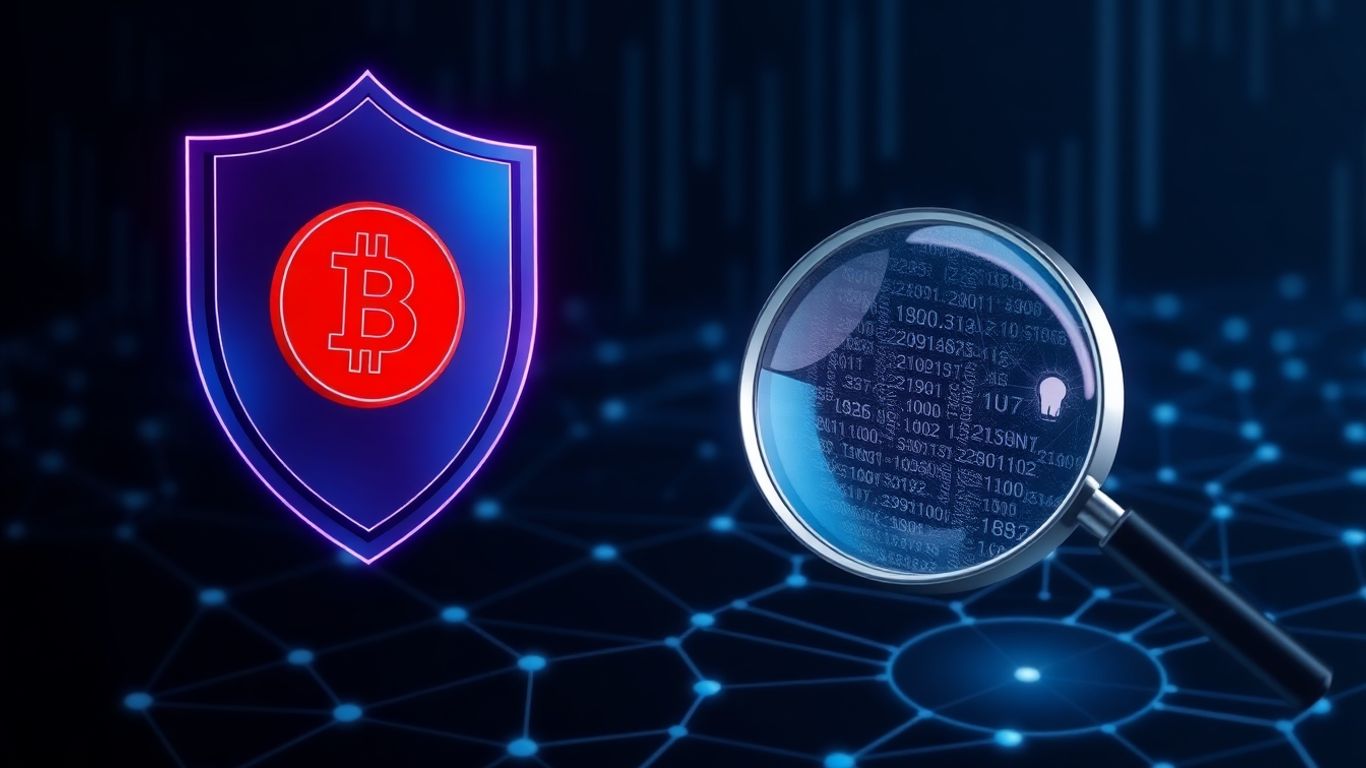
So, you've plugged a token's contract address into a scanner, and it's spat out a report. Now what? This report is your next line of defense, but it's not just a simple 'good' or 'bad' stamp. You need to actually understand what it's telling you. Think of it like getting a health check-up; the doctor gives you numbers and findings, and you need to know what those mean for your well-being.
Many scanners, including De.Fi, will give you an overall score. This score is usually a number, maybe out of 100, that tries to summarize the contract's safety. A higher score generally means fewer immediate red flags were found. However, don't just blindly trust the score. It's a helpful starting point, but it doesn't catch everything. A project could have a decent score but still have hidden risks that the scanner might miss or deem low probability.
While the overall score is useful, the real meat of the report is in the specific warnings it flags. These are the things that should make you pause and think twice. Here are some common ones:
This is one of the biggest red flags you can see in a report. When a smart contract is deployed, the creator usually has 'ownership' of it. This ownership gives them special powers, like the ability to change the contract's rules later on. If the developers don't renounce ownership, it means they still hold these powers. They could, at any moment, decide to:
Essentially, if ownership isn't renounced, the developers have the keys to the kingdom and can pull the rug whenever they feel like it. It's a massive risk and a strong indicator that you should probably walk away.
Always remember that a scanner is a tool to help you, not a guarantee. You still need to use your own judgment and do your own research. Don't just blindly trust the scanner's score.
So, you've used a rug pull scanner, and it's given you some information. That's a good start, but it's really just the first step. Think of the scanner report like getting a quick health check-up; it points out potential issues, but you still need to dig deeper to really understand what's going on. Relying solely on a scanner is like trying to judge a book by its cover – you might miss a lot of important details.
While scanners look at the code itself, artificial intelligence can help us look at how the money is actually moving. AI tools can sift through massive amounts of transaction data on the blockchain, looking for unusual activity that might signal trouble. This could be things like large amounts of tokens being moved to obscure wallets by the developers, or strange patterns in how tokens are being bought and sold. It's about spotting the subtle signs that a human might miss.
Beyond just the code and transaction logs, it's important to look at the people behind the project. Are they open about who they are? While not every project needs to be fully doxxed (meaning developers reveal their real identities), a complete lack of transparency can be a warning sign. What's their history? Have they been involved in other projects, and how did those turn out? Checking their past work can give you a better idea of their reliability. You can often find this info on their website or social media. It helps build a picture of who you're trusting with your funds.
What are people in the project's community channels saying? Are the developers actually talking to people, answering questions, and being upfront about what's going on? A project that hides behind vague answers or has a community full of bots is a big warning sign. Look for genuine discussions, constructive criticism, and developers who seem to be genuinely involved. A truly transparent project will have nothing to hide. Also, consider security audits. While a scanner checks the code, a professional audit is like a deep inspection by experts. These audits look for vulnerabilities that even automated tools might miss. You want to see if the project has had its smart contracts audited by reputable firms and if they've made the audit reports public. If they have, read them! See what issues were found and, more importantly, how they were fixed. A project that skips audits or hides the results is definitely not playing fair. It's always a good idea to check for asset volatility and liquidity to ensure compliance with relevant standards. This proactive approach helps mitigate risks and ensures the health of crypto investments.
Remember, no single tool or piece of information is a guarantee. The best defense against rug pulls is a combination of using scanners, doing your own research into the project's team and community, and understanding the technical aspects of the token's contract. Don't rush your decisions.
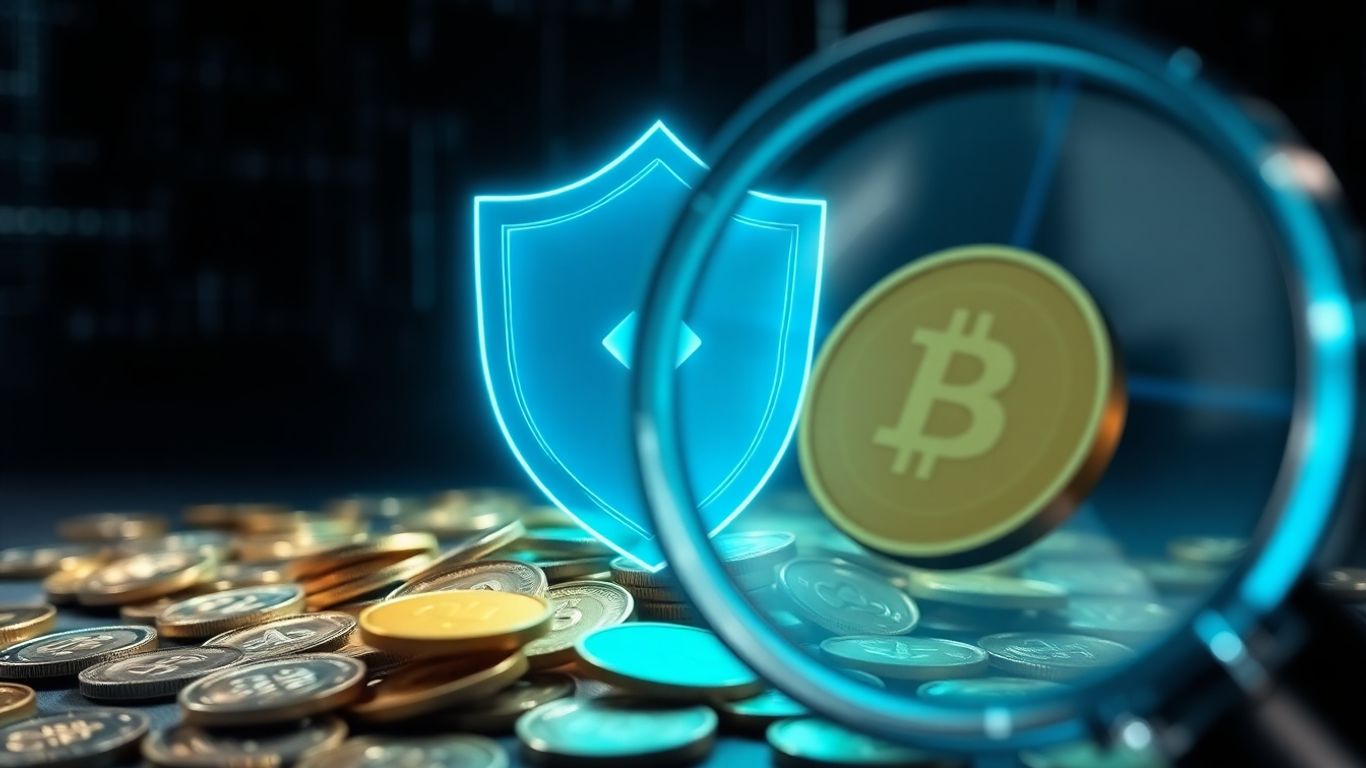
Smart contracts are the backbone of many crypto projects, but they can also be a weak spot for scams. Think of them as automated agreements written in code. While they can automate processes and add security, malicious actors can embed hidden functions within them. These functions might allow developers to mint unlimited tokens, effectively crashing the price, or to drain liquidity pools without warning. Understanding the code behind a smart contract is like understanding the fine print in any agreement – it's vital. Some contracts are designed to be immutable, meaning they can't be changed once deployed, which is generally good. However, if the initial code has a flaw or a backdoor, there's no easy way to fix it. This is why projects that have had their ownership renounced, meaning the developers gave up control over the contract, are often seen as safer. It removes the ability for them to make drastic changes later on.
Honeypots are a specific type of scam where the smart contract is designed to look like a legitimate investment opportunity, but it's actually rigged. You might be able to send funds into the contract, but you'll find yourself completely unable to withdraw them. It's like a digital trap. The contract might have hidden rules that prevent selling or withdrawing under certain conditions, or it might simply have a function that allows the creator to steal all the deposited funds. These are often disguised as high-yield staking or lending protocols. Exploits, on the other hand, are vulnerabilities in the smart contract code that hackers can find and use to steal funds. These aren't necessarily intentional scams by the developers, but they can be just as devastating. A good example of a honeypot is when a contract allows buying tokens but prevents selling them, leaving investors holding a worthless asset.
Fighting rug pulls isn't just about individual vigilance; it's also about community power. Projects that encourage transparency and community involvement tend to be more secure. This can take many forms. For instance, shared watchlists or decentralized alert systems where users can report and flag suspicious projects are incredibly useful. When people pool their knowledge and observations, it creates a powerful collective defense. Many projects now have dedicated channels where community members can discuss potential risks, share findings from their own research, and warn others. This shared vigilance is a significant barrier against scams, as it’s much harder for a rug pull to go unnoticed when a whole community is watching. The goal here is to move from a reactive stance, where we only deal with scams after they happen, to a proactive one. By using smart technology and working together, we can spot the warning signs much earlier and prevent a lot of the damage before it even occurs. It’s about building a safer environment for everyone involved in crypto. You can find resources that track these scams to help inform your decisions about crypto scams.
So, the crypto world can be a bit wild, and scams like rug pulls are definitely a real thing. But it doesn't have to be all doom and gloom. By doing your own homework – like checking out who's behind a project and if they've had their code looked at by experts – you can steer clear of a lot of trouble. Tools like scanners are super helpful for spotting those shady signs, like if a project owner can just change the rules whenever they want. Plus, staying connected with other people in the crypto space and sharing what you learn is a smart move. It’s all about being aware and using the resources available to protect your hard-earned cash. Keep learning, stay sharp, and you'll be much better equipped to handle whatever the crypto market throws your way.
Imagine you invest in a cool new digital coin. A rug pull happens when the people who made the coin suddenly disappear with everyone's money, leaving the coin worth nothing. It's like they pull the rug out from under you!
Look out for signs like promises of crazy high returns, anonymous teams, or projects that don't have a clear plan. If something feels off or too good to be true, it probably is. Always do your own research!
A rug pull scanner is like a security guard for your crypto. You give it the address of a digital coin, and it checks the code and transaction history for anything suspicious, helping you spot potential scams before you invest.
A scanner is a great tool, but it's not a guarantee. It helps you find potential problems, but you still need to do your own homework, check the project's team, and see what the community is saying. Don't just blindly trust the scanner's score.
Some big warning signs include if the project owners can still change the contract rules, if a few people hold most of the tokens (high dump risk), or if the contract allows creating unlimited new tokens. Also, watch out for traps that lock your funds.
Always do your own research! Look into the project's team, see if they're open about their plans, and check if experts have reviewed their code (audits). Talking to others in the crypto community can also give you valuable insights.
